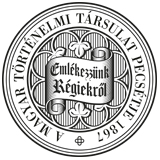Századok – 2020
2020 / 3. szám - TANULMÁNY - Mikó Gábor: Oszmánellenes hadjáratok lehetőségei a 16. század elején. Kísérlet Szrebernik, Szokol és Tessány várak visszahódítására 1513-ban
OSZMÁNELLENES HADJÁRATOK LEHETŐSÉGEI A 16. SZÁZAD ELEJÉN 620 reliqua etiam negotia nostra ad onera belli supportanda summe necessaria facilius expediri possent, iidem fratres vestri unacum ceteris fidelibus nostris, postquam huc Budam regressi sumus, subsidium illud quinquaginta denarii maiestati nostre in generali dieta pro octavo die festi epiphaniarum Domini proxime transsacti214 hic Bude celebrata oblatum citissime sese exoluturos benevole de novo obtulerunt. Quapropter fidelitati vestre harum serie firmiter sub perpetue infidelitatis nota committimus et mandamus, quatenus statim visis presentibus, imprimis et ante omnia illas gentes, quas iuxta formam decreti ratione iobagionum vestrorum pro defensione regni conservare tenemini, citissime ad loca per alias literas nostras deputata mittere, vosque per singula capita ad exercituandum iuxta preinsertos articulos preparare atque ad diem et locum prefixum, ubi et quando etiam nos in propria persona Deo volente constituemur, convenire et congregare modis omnibus debeatis et teneamini profecturi, inde quo necessitas et defensio atque commoditas huius regni expostulare videbitur. Taxam etiam et subsidium promissum exnunc et absque omni iam ulteriori mora extradare debeatis, ne maiora pericula, quod Deus avertat, exinde contingant. Nam alias quicunque in his negligentes reperti fuerint, tales premissa nota infidelitatis gravissime mulctabimus. Aliud igitur in hiis nulla ratione facere presumatis. Datum. THE OPPORTUNITIES OF THE ANTI-OTTOMAN OFFENSIVE IN THE EARLY SIXTEENTH CENTURY The Attempt to Reconquer the Castles of Srebrenik, Sokol, and Tešanj in 1513 by Gábor Mikó SUMMARY The paper explores the border warfare between the medieval Hungarian Kingdom and the Ottoman Empire during the fairly brief period between October 1512 and March 1514. In the autumn of 1512, the Ottomans took several Bosnian border forts that had been important parts of the Hungarian defensive belt. In the course of 1513, King Wladislas II and his government made considerable efforts to prepare for the reconquest of the lost fortresses: the social basis of taxpaying was extended, the amount of tax increased, and the mobilization of troops was set in motion. Yet the surviving evidence shows that both tax collection and mobilization dragged on for too long. The retaking of the fortresses was not even attempted in the summer of 1513, with only Voivode János Szapolyai leading a lightning campaign to Ottoman territory. Although the restoration of the pre-1512 defensive belt thus remained a dream, the border as fixed by the winter of 1513 remained unchanged until the loss of Belgrade in 1521. 214 1513. jan. 15.
